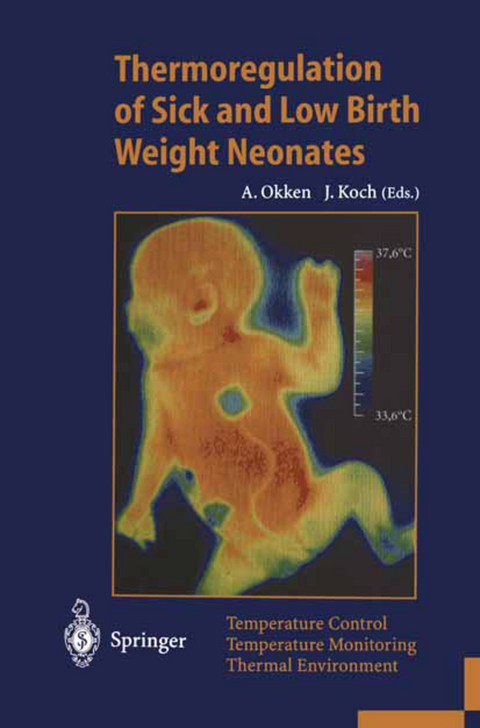
Thermoregulation of Sick and Low Birth Weight Neonates
Springer Berlin (Verlag)
978-3-642-79936-5 (ISBN)
Thermodynamic Principles.- 1 The Concept of Thermoregulation.- 2 Metabolic Background of Neonatal Heat Production, Energy Balance, Metabolic Response to Heat and Cold.- 3 Physics of Neonatal Heat Transfer, Routes of Heat Loss and Heat Gain.- 4 Body Temperature in Sick Neonates, Deseases and Biochemical Disturbances.- Temperature Monitoring.- 5 Temperature Measurements and Distribution of Temperatures throughout the Body in Neonates.- 6 Thermal Monitoring of very Preterm Infants. Which Temperature should be Measured?.- 7 Experiences with Thermal Monitoring, Influence of Neonatal Care and how should it be Monitored.- 8 Temperature Control in Preterm Infants - Effect of Birthweight and Gestational Age.- 9 Thermal Monitoring in Sick Neonates.- Optimal Thermal Environment.- 10 Physical Properties of the Thermal Environment.- 11 Effect of the Thermal Environment on Neonatal Mortality and Morbidity: State of the Evidence.- 12 Treatment of Sick Newborns in Incubators.- 13 Treatment of Sick Newborns under Radiant Warmers.- 14 Treatment of Sick Newborns with Heated Mattresses.- 15 Aspects of Hygiene.- Extreme Thermal Conditions.- 16 Prevention of Neonatal Hypothermia in the Delivery Room.- 17 Transportation of Sick Newborns in a Cold Environment.
| Erscheint lt. Verlag | 16.12.2011 |
|---|---|
| Zusatzinfo | XIII, 241 p. |
| Verlagsort | Berlin |
| Sprache | englisch |
| Maße | 155 x 235 mm |
| Gewicht | 399 g |
| Themenwelt | Medizin / Pharmazie ► Medizinische Fachgebiete ► Pädiatrie |
| Schlagworte | Birth • Distribution • Energy • Low Birth Weight Neonates • Metabolism • Mortality • Neugeborene • newborn • prevention • Production • Regulation • Temperatur Control • Thermomonitoring • Thermoregulation • Treatment |
| ISBN-10 | 3-642-79936-1 / 3642799361 |
| ISBN-13 | 978-3-642-79936-5 / 9783642799365 |
| Zustand | Neuware |
| Haben Sie eine Frage zum Produkt? |
aus dem Bereich


